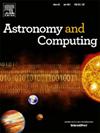强化学习
IF 1.9
4区 物理与天体物理
Q2 ASTRONOMY & ASTROPHYSICS
引用次数: 0
摘要
观测天体和增进我们对天体的科学了解涉及繁琐的规划、时间安排、数据收集和数据后处理。天文学的许多这些操作环节都是由天文学家专家指导和执行的。强化学习是一种机制,我们(作为人类和天文学家)可以教人工智能代理执行其中一些繁琐的任务。在本文中,我们将介绍强化学习的最新进展以及它如何使天文学受益。本文章由计算机程序翻译,如有差异,请以英文原文为准。
Reinforcement learning
Observing celestial objects and advancing our scientific knowledge about them involves tedious planning, scheduling, data collection and data post-processing. Many of these operational aspects of astronomy are guided and executed by expert astronomers. Reinforcement learning is a mechanism where we (as humans and astronomers) can teach agents of artificial intelligence to perform some of these tedious tasks. In this paper, we will present a state of the art overview of reinforcement learning and how it can benefit astronomy.
求助全文
通过发布文献求助,成功后即可免费获取论文全文。
去求助
来源期刊

Astronomy and Computing
ASTRONOMY & ASTROPHYSICSCOMPUTER SCIENCE,-COMPUTER SCIENCE, INTERDISCIPLINARY APPLICATIONS
CiteScore
4.10
自引率
8.00%
发文量
67
期刊介绍:
Astronomy and Computing is a peer-reviewed journal that focuses on the broad area between astronomy, computer science and information technology. The journal aims to publish the work of scientists and (software) engineers in all aspects of astronomical computing, including the collection, analysis, reduction, visualisation, preservation and dissemination of data, and the development of astronomical software and simulations. The journal covers applications for academic computer science techniques to astronomy, as well as novel applications of information technologies within astronomy.
 求助内容:
求助内容: 应助结果提醒方式:
应助结果提醒方式:


